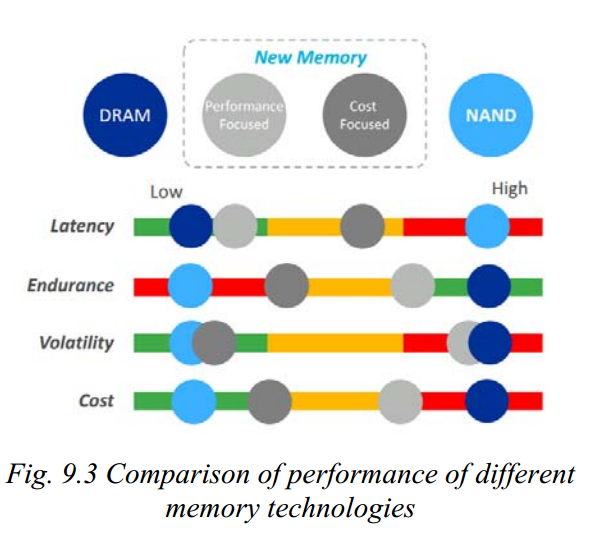In the course of recent years, we've
chronicled the change of Moore's Law. Initially authored as an approach to
clarify progressing enhancements in transistor scaling, Moore's law has been
reclassified and reached out to incorporate long haul patterns in semiconductor
execution and the combination of new chip highlights. Presently, the
International Technology Roadmap for Semiconductors (ITRS) has dischargedanother report on the eventual fate of semiconductor innovation that states
customary 2D transistor thickness scaling will probably end by 2021 — to become
supplanted by new and diverse sorts of reconciliation and scaling.
A significant
part of the ITRS' as of late discharged official report concentrates in transit
the importance of Moore's law has changed throughout the years. We examined
this in 2015 when we noticed the requirement for a Moore's Law 3.0, as the
center of the semiconductor business moved from contracting singular chips to a
SoC or gadget driven model, which stressed capacity mix and power utilization
decreases. The present day PDA is a case of this third sort of mix, which joins
a superior quality screen, fast cell and remote system, a touch screen
interface, top notch cameras equipped for catching both photographs and video,
a short-run electric lamp (on account of a coordinated blaze), and 16-128GB of
inward stockpiling. Every one of this capacity is combined with a rapid
framework on-chip that works well above 1GHz.
The movement from 2D to 3D
structures will be a lot more straightforward for a few advances than others.
One of the significant difficulties of receiving 3D development for rationale
circuits, similar to CPUs, is that stacking memory transistors on top of
rationale transistors could liquefy one or both layers if an excessive amount
of warmth is caught inside the kick the bucket. We've as of now seen NAND
streak make the movement to 3D fabricating. Yet 3D CPUs aren't normal until the
2021 – 2024 time span. Amongst sometimes, producers are relied upon to
coordinate different materials, similar to silicon-germanium (SiGe) or III-V
(semiconductors from gatherings III and V of the occasional table) to enhance
current execution.
One point in the ITRS repeated that
we've likewise secured before in ET is that the way of what constitutes
progression and how we describe that execution change will keep on emphasizing
low control over strict clock propels. This is incompletely because of the way
of what the business sector is requesting, and mostly thanks to the restricted
capacity of current materials to hit higher clock rates. As the diagram above
appears, just van der Waal FETs are relied upon to try to match high-control
CMOS as far as outright execution, but at fundamentally decreased force
utilization. In thermally obliged situations, the vdWFETs and exFETs are
fundamentally speedier when compelled to a force envelope of 10W/cm2.
One option
glided by the ITRS is that we may see upgrades in the use of exceedingly
specific heterogeneous centers that utilize either one of a kind capacity
squares or are profoundly tuned to specific applications. This has been a
proposed answer for the purported dull silicon issue that we've secured some
time recently, and it's generally simpler to clarify. Rather than building
multi-center squares with an expanding number of comparative chips, makers
would utilize some of that space to assemble processors devoted to particular
assignments. Reasonably, this would imply that your camera may have one
dedicated processor, while different applications could keep running on
different centers. Some exploration ventures have investigated fabricating few
centers to handle assignments at an application level, however the ITRS report
doesn't dig into this point of interest.
One point that the ITRS report
makes, however doesn't inexorably come right out and say, is that we're going
to see this sort of combination and envelope-pushing in the heart of IoT
advancement before it comes to desktops, portable PCs, and so forth. The reason
is straightforward, and as surmised above: Right now, the silicon business is
pushing hard to make chips that can keep running on less and less power while
at the same time enhancing power utilization. On the off chance that you need
in order to construct a cutting edge wearable, slicing power utilization from
1W to 0.75W is an enormous change. In any case, the innovations that permit you
to cut that 0.25W of force may not make an interpretation of well to gadgets in
the 15W-140W tablet and desktop range. Likewise, constructing 3D chips on incorporated
CPUs requires suitable warm dissemination, which implies the primary chips to
depend on these strategies will most likely be to a great degree low-control
gadgets — not the sort of centers in your table or desktop.
Actually, it's to some degree
telling that while the ITRS' official synopsis makes broad forecasts in regards
to future gadget frequencies, transfer speeds, and working qualities at the
server farm, versatile, and Internet of Everything (the proposed successor to
the Internet of Things), it doesn't endeavor to anticipate the eventual fate of
traditional desktops and portable workstations. The nearest it comes as
foreseeing that by 2029 the normal versatile processor will contain 25
application processors and 303 GPU centers, with a maximum single-segment
recurrence of 4.7GHz (apparently burst recurrence).
The
ramifications of the report are clear: Those who look for essentially enhanced
CPU execution will do best to look for it by means of new registering models,
enhanced multi-threading, or enhanced memory execution when all is said in done
— not through changes to crude clock speed. With Intel stuck in the doldrums
with regards to giving design upgrades, we wouldn't hold our breath on this
front.



Post a Comment